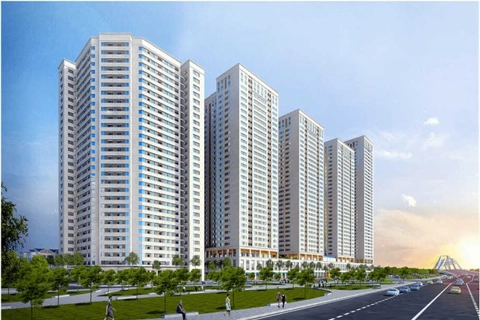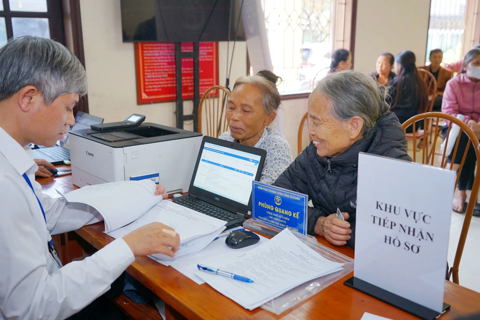Property
How to construct riverside city of Hanoi
Sep 28, 2016 / 03:51 PM
KTĐT - Similar to Ha Bac (former), Ha Nam in the North and the South of a river, Hanoi is in the middle or inner of rivers. There are 9 big and small rivers flowing through Hanoi, including Red River, Da River, Duong River, Ca Lo River, Cau River, To Lich River, Nhue River, Day River and Tich River. However, the Red River is the main river because it flows along Hanoi, with two tributaries flowing to the river, including Da River and Lo River. The remaining rivers take water from the Red River and flow in the North-South directions and then finally flow to the Red River at the downstream. When mentioning about Hanoi land and water, it means re-telling the story of Red River and Hanoi City.
KTĐT - Similar to Ha Bac (former), Ha Nam in the North and the South of a river, Hanoi is in the middle or inner of rivers. There are 9 big and small rivers flowing through Hanoi, including Red River, Da River, Duong River, Ca Lo River, Cau River, To Lich River, Nhue River, Day River and Tich River. However, the Red River is the main river because it flows along Hanoi, with two tributaries flowing to the river, including Da River and Lo River. The remaining rivers take water from the Red River and flow in the North-South directions and then finally flow to the Red River at the downstream. When mentioning about Hanoi land and water, it means re-telling the story of Red River and Hanoi City.

The Red River in Hanoi
|
Rivers with Hanoi's history
Similar to the life born from water, most cities in this planet share the same origin from residential areas around rivers. It is the same for Hanoi. It is more attached to the river with the name Hanoi - the land born and located in rivers. No historical site or legend of Hanoi is not attached to the image of a river or a lake in Hanoi. From the legend of Son Tinh and Thuy Tinh, to story about modern technology when French people constructed an iron bridge crossing the Red River. Being amazed at the Western technological advancements, our ancestors put aside backward perspectives and theories to start a "Duy Tan" (innovation) to "improve people's awareness, calm the people and promote the people”.
The thousand-year city starts from the Red River section welcomed the dragon boat of Ly Cong Uan King after he moved the capital city from Hoa Lu to Thang Long, following the myths of the West Lake and the Sword Lake which have been told from one to another generation, which are also the relics of the old Red River.
From Phong Chau - the land of Hung King to this side - following Tich River and Day River, there are a of pagodas which follow the flow to Son Nam Town (Ha Nam - Nam Ha): Vien Chau, Tay Dang and Chu Quyen Communal Houses; Mia Pagoda - Va Temple, Duong Lam Ancient Village, Hat Mon Temple, Tay Phuong Pagoda, Thay Pagoda, Tram Gian Pagoda, Tram Pagoda, etc.
All the rivers have resounding victories from the ancient time. In the war time, the Red River concealed the City's Regiment to withdraw safely and left behind the fiery Capital and then returned with the song of victory on the Bridge with the breeze from the Red River. Following Nhue River and To Lich River, each wharf or Banyan Tree along the river is also a great story.
Rivers silently flow through the rural areas were imbued with the footprints of Cham People following Day River to establish new hometowns on the ancient Viet land such as Duong Lieu and Son Dong (Hoai Duc). Rivers silently flow into the beautiful landscape and create true fairy lands where the millions of people pilgrimage to the Buddhist land - such as Huong Son and Huong Tich.
On the two sides of rivers, there are also villages - where the brown-shirt guys use net to catch fish and young girls reel silk. Craft villages including porcelain, knitting, curving, embroiling, bronze casting, silver making, etc. are located near each other where talented artists come to Ke Cho to become resound in the Capital. This place nurtured the stuff of many people who were very humble, had broad knowledge and established the Red River - Thang Long Culture which are typical for the Northern Region.
After thousands of years or more, Red River - Hanoi will continue to be the blending of land, water and people despite a lot of changes.
From City of rivers to City of bridges
Hanoi has a history of thousands of years, but the City has been constructed in the Western style for just over 130 years (1885 - 2016). French people constructed the first bridge - Long Bien Bridge crossing the Red River, but the other side was just Gia Lam town with railway station, because of scaring the large and fierce Red River. Although the first military and commercial street was constructed near the river edge of the Red River, the great flood in 1926 flew over the West Lake and threatened the inner-city, Hanoi upgraded the dike to prevent flood and gradually turned it back on the Red River. In 1941 the second bridge crossing the river was constructed and located at the end of Tran Hung Dao Street, but by the 1954, Hanoi was still planned to be a riverside city, from near to far.
After taking over Hanoi (October 10, 1954), Vietnam's young planning sector with the support from the experts in socialist countries had set a dim perspective cross the other rise of the river. In the planning of Hanoi by 2010 prepared by Vietnamese government in 1990, there were also Thang Long and Chuong Duong bridges, but a city on the other side of the River was still unclear.
In 1998, the Planning No. 198 was prepared by domestic, U.S., European and Japanese experts formed Hanoi to be expanded to the other side of the Red River with 9 connecting bridges. However, the Red River was still left intact. In the following years, many real estate investors have seen the potentialities of the riverside lands and chopped down into sections to prepare projects worth hundred of millions of U.S. dollars, but Vietnamese planners still tried to draw 1km of the riverside and then left it incomplete.
The planning 198 promoted the main role to strongly develop Hanoi and arose new issues, then Hanoi had a new assessment and development study conducted by Japanese experts (HAIDEP report-2006). The report was carefully prepared, but then was forgotten when the project "Riverside City" proposed by Korean real estate traders in 2007. The commencement of the project had very attractive opening: “Han River (Seoul) today, Red River tomorrow”… However, the image of high-rise buildings on the riverside like concrete and glass walls separating Hanoi with the Red River was criticized and the project was revised for many times. The people also soon forgot it and flowed into the storm (of real estate hedging) toward the West of the extended Hanoi (2008).
Riverside City: The story of land and water
The two important causes leading to the failure of the great project with the exploitation of 1,500 ha of land to construct urban areas on two sides of the river and the invested capital of up to US$ 7 billion are: Firstly, it only sees that land but does not see the water. Secondly, to have the land for real estate trading, it is required to displace a large number to far area, so the consent is hard to reach. The site clearance is difficult and contains a lot of risks that any serious investors want to avoid. However, the story of land and water draws more attention.
A riverside city must have water because the city will be located near a dry ground when there is no water or the water will be polluted quickly if there is less water. In the previous time when To Lich River was full of water, all the wastewater discharged from culverts were washed out and there were still fish and vegetables, but when the water dries out, 17km of To Lich River had bad odor. So, it is important that the Red River must have water, but its source is far and the sections flowing through Hanoi have run out of water and largely depended on the flood discharge from Da River's Reservoir, but Da River's Reservoir does not always have available water (because its water source mainly comes from South China).
I have recently heard that there will be new planning on the river and hope that planners will spend time to studying the water source of the Red River and must have water regulating plan in the two seasons. There must be plan on balancing the inner water source and assuring enough water for the whole Northern delta area with 27 million people (to serve both the living and production).
Besides, they should also take into account the supplementary water resource to assure the water security? Nowadays, fourth-year architecture students can use the graphic effects to draw out high-rise building, winding rivers & lakes, flying clouds and flowing vehicles, etc. within one night, but how to calculate the stable water supply with tens of billions of water cubic meters circulating in the Red River is the real story needing attention.
Before talking about the riverside city, we must think about the story of land and water because the land is born from the water, so it is required to firstly assure the clean water for the river, and when there is clean water, buildings along the riversides will be nice regardless how they are drawn. Meanwhile, the planning for the new riverside city to enrich and supplement for the old city will be another story.








